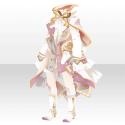

- TREASURED EGG OF WONDERLAND CRACKED
- TREASURED EGG OF WONDERLAND SERIES
- TREASURED EGG OF WONDERLAND CRACK
Photoartist QQ Li, who goes under the name Ozyman, offers us the intriguing series of images above. Misty Beier documents some of the area’s fossil wealth in her photobook, Exploring Bisti Badlands: Bisti Wilderness Area in San Juan Basin of New Mexico, some images from which are shown above.

Petrified wood and dinosaur bones are not at all uncommon in the Bisti Badlands though no actual dinosaur eggs have been found.
TREASURED EGG OF WONDERLAND CRACKED
What do people think of when they first set eyes on the cracked eggs of the Bisti Egg Garden? One ominous thought might be: “where’s the beast that laid them?” Indeed, the area’s formerly warm and wet prehistory makes it a fossil-hunter’s paradise today. Though the “eggs” of the Bisti Egg Garden contain no coal, the combination of different types of sedimentary rock with varying degrees of hardness allows for a uniquely beautiful cameo effect as these boulders slowly erode from the outside in. Thin seams of coal (above) add contrast to the layers of rock exposed today after millions of years of weathering and erosion. As such, most of the rocks formed in the area were originally mud, clay and other sediments later overlain by windblown sand.

The rock strata we now call the Kirtland and Fruitland Formations date from the Late Cretaceous period when the great inland sea that divided North America into western and eastern halves was slowly drying up.

But you could easily spend several weeks, or more, exploring the vast eroded washes.” Scrambled Ages With some planning, you can visit the highlights in a couple days. It’s a photographer’s paradise, with interesting forms and unique features. But a little exploration reveals innumerable treasures for both the mind and eye. Scott Bacon, to be exact! Bacon, who visited the Bisti Egg Garden last year and returned to post the stunning photos shown (in part) above, provides the following commentary to complement his imagery: “At first glance, the Bisti/De-Na-Zin Wilderness in Northwest New Mexico is just a dry, barren and harsh landscape – the very definition of badlands. Where there’s eggs, there’s gotta be some bacon…. When you add seams of coal into the mix, the result is a bizarre, multicolored landscape of arches, hoodoos and curiously shaped rocks like those found in the Bisti Badlands and the nearby Ah-shi-sle-pah Wilderness Study Area. The name Bisti (pronounced “Bis-tie”) is derived from the language of the Navajo who used it to describe “a large area of shale hills.” The Navajo’s geology happened to be spot on, as the 38,305 acre Bisti/De-Na-Zin Wilderness predominantly features Kirtland Shale and various sedimentary rocks of the Fruitland Formation. (images via: Reise Blog & Travel News and Isabel Synnatschke) As well, the formation can be found in the Bisti Badlands which themselves are located in the official Bisti/De-Na-Zin Wilderness area.
TREASURED EGG OF WONDERLAND CRACK
For one, it’s been called the Crack Eggs or the Egg Factory. Tucked away in the southwest’s eerie and enigmatic Four Corners region, the Bisti Egg Garden itself exists under a slight cloud of confusion. Tucked away in the little known Bisti Wilderness Area near Farmington in northwest New Mexico, this odd yet awesome example of selective erosion tells a big story in just a few words. Not all of Nature’s rock stars play for the larger-than-life award, however. The Grand Canyon, Monument Valley, Arches National Park… just some of the big & bold geological wonders famed for their striking size as much as their scenic beauty. (images via: Gleb Tarassenko and R H Hawkins)


 0 kommentar(er)
0 kommentar(er)
